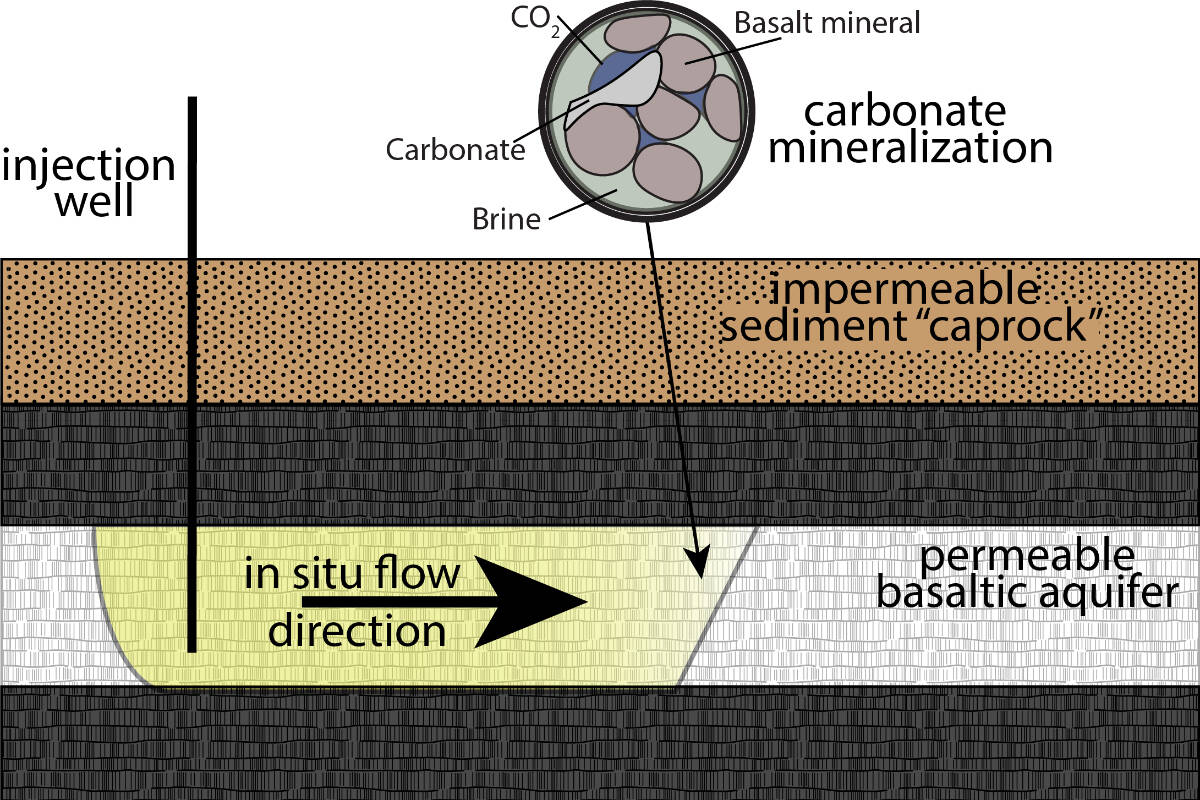A University of Victoria-led research project may have found a place to put gigatons of extra carbon dioxide floating in the atmosphere.
The process involves injecting captured carbon into porous rock on the ocean floor in areas like the Cascadia Basin off the coast of Vancouver Island, which reacts with other minerals to solidify into carbonate rock. A new research paper from a team at the Solid Carbon Project, run by Ocean Networks Canada (which is a UVic initiative), estimates that process can happen in as little as 25 years.
The carbon is trapped by the natural layer of sedimentary rock, made of up to 800 metres of sandstone and siltstone. Even with the variety in the ocean floor, researchers still found mineralization could be expected within 100 years.
“What we have shown in this study is that carbon dioxide can transform to rock within 25 years as opposed to cases where mineralization takes many millennia,” Adedapo Awolayo, the research paper’s principal author and a former post-doctoral fellow on the Solid Carbon research team, said in a statement.
Benjamin Tutolo, a researcher with Solid Carbon and associate professor in the Department of Geoscience at the University of Calgary, says the research team projects that 25 years post-injection, 95 per cent of the CO2 will be mineralized.
“Once it’s down there, it’s not going to go anywhere for a long time,” he said in a statement.
The 25-year timeline is currently based on modelling and simulations, but if the demonstration project goes well, a permanent equipment placement could aim to start by injecting half a million tons of CO2 per year at each sequestration site. If the technology is adopted globally, it could scale up to more than 20 gigatons per year by 2100, according to Kate Moran, Ocean Network Canada’s president and chief executive officer.
Currently, human activity adds around 50 gigatons of greenhouse gases to the atmosphere each year.
Tutolo said the findings are good news, but not mission accomplished when it comes to tackling climate change.
“This is not a ‘get out of jail free’ card,” Tutolo says. “All pathways to remain under 1.5 degrees of global warming require the use of negative emissions technologies such as this, but we also need to decarbonize the economy to get there. We need both.”
Tutolo added that projections to keep warming under 1.5 degrees require 10 gigatons of carbon to be captured out of the atmosphere by mid-century.
ALSO READ: UVic athletes band together for third annual relay to honour late soccer captain
Do you have a story tip? Email: vnc.editorial@blackpress.ca.
Follow us on Twitter and Instagram, and like us on Facebook.

